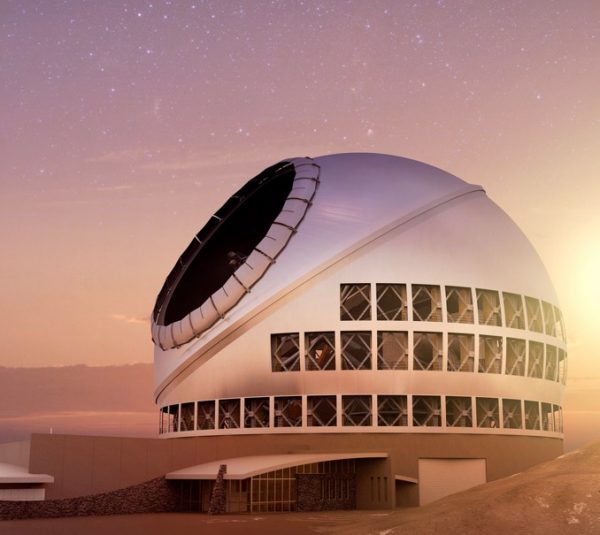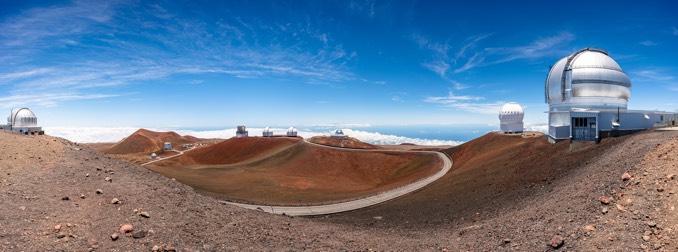Observatories to resume operations amid protests – Astronomy Now – Astronomy Now Online

Editor’s note: Demonstrators protesting construction of the Thirty Metre Telescope atop Mauna Kea in Hawaii have blockaded the access road to the top of the state’s tallest mountain where some of the world’s premier telescopes are located. The following news release details an interim agreement to re-open the observatories to full-time employees.
After a four-week suspension of work at the summit of Maunakea, the existing telescopes will attempt a return to operations.
“The Maunakea Observatories represent an invaluable sector for Hawaii Island and our entire State — the economic impact, intellectual capital, educational resources and community support they provide is irreplaceable,” said Governor David Ige, State of Hawaii. “The interim solution for access to the telescopes is a step forward but remains inadequate for the long term. The State remains committed to re-opening the Maunakea Access Road intersection as an immediate priority. The State stands behind the more than 500 employees’ efforts to bring the telescopes back online to begin astronomical observations again.”
The Maunakea Access Road remains blockaded. However, activists agreed, after the Emergency Proclamation was withdrawn, to allow all existing observatory employees, including astronomers, to access Maunakea using the Old Saddle Road and a section of unpaved lava. This route is unimproved and lined with tents, cars and people. However, pursuant to this agreement, on Wednesday, August 7, 2019, the State laid cinder and cones in an attempt to address safety concerns. The people blocking the road also agreed to allow larger vehicles to access Maunakea by going around the tent blockade. This means the vehicles will travel on the road’s shoulder.
The current process of gaining access to Maunakea requires the observatories to provide prearranged notification of all vehicles seeking access. To accomplish this, the people blocking the road will be provided a list of which vehicles are going up and when. This requires the observatories to contact the Office of Maunakea Management, which then contacts law enforcement, who then provides the list to the activists. The observatories are also aware that activists have been keeping a log of who goes up and down.
This arrangement — and the improvements made by the state to address safety concerns and ensure appropriate access for the observatories — constitutes progress. The observatories hope this process will allow them to return to as close to full operations as possible while the Maunakea Access Road remains blocked. However, the state, county and observatories remain committed to reopening the blocked Maunakea Access Road intersection to vehicular traffic so that access will be unimpeded and prior notification and/or approval by the protesters will no longer be necessary.
“This is what we have all been collectively working on: protecting the rights of the protectors to demonstrate is our responsibility; protecting the rights of the workers at the observatories to go up the mountain to do their work is our responsibility; and protecting the rights of the public to visit the mountain is our responsibility,” said Mayor Harry Kim, County of Hawaii. “We’re very appreciative of the efforts by DOCARE to negotiate with the protectors to regain access. This is a step forward, but still my goal is to open the mountain in protection of the rights of all others.”
The Observatories plan to send regular day crews back to the summit to prepare the telescopes to resume operations. During the prolonged shutdown, some instruments and systems were disabled to protect the health of the technology, so the restart process will vary in complexity from telescope to telescope. The Observatories hope to resume scientific observations as soon as possible.
“The Maunakea Observatories thank the state and county for their statements of support for a continued vibrant astronomy sector in Hawaii,” said Hilton Lewis, director of the W. M. Keck Observatory. “We are deeply committed to our community here on Hawaii Island and are eager to get back to work at our telescopes as soon as possible, to resume the world-leading astronomy for which Hawaii is renowned.”

This four-week suspension has been the longest period of time in the five-decade history of Maunakea astronomy that all telescopes have been simultaneously offline. Observatory employees — technicians, astronomers, instrument scientists and engineers alike — eagerly anticipate a return to the daily work they love. The international community, of which these telescopes are a part, also eagerly awaits the return of their vital partner.
The Maunakea Observatories are a collaboration of independent institutions with telescopes located on Maunakea on the island of Hawaii. Together, the Observatories make Maunakea the most scientifically productive site for astronomy world-wide. The Maunakea Observatories include Caltech Submillimeter Observatory, Canada-France-Hawaii Telescope, Gemini International Observatory, James Clerk Maxwell Telescope (EAO), NASA Infrared Telescope Facility, Subaru Telescope, Submillimeter Array, United Kingdom Infrared Telescope, University of Hawaii Hilo Educational Telescope, University of Hawaii 2.2 Meter Telescope, Very Long Baseline Array and W. M. Keck Observatory (Keck I and Keck II).





